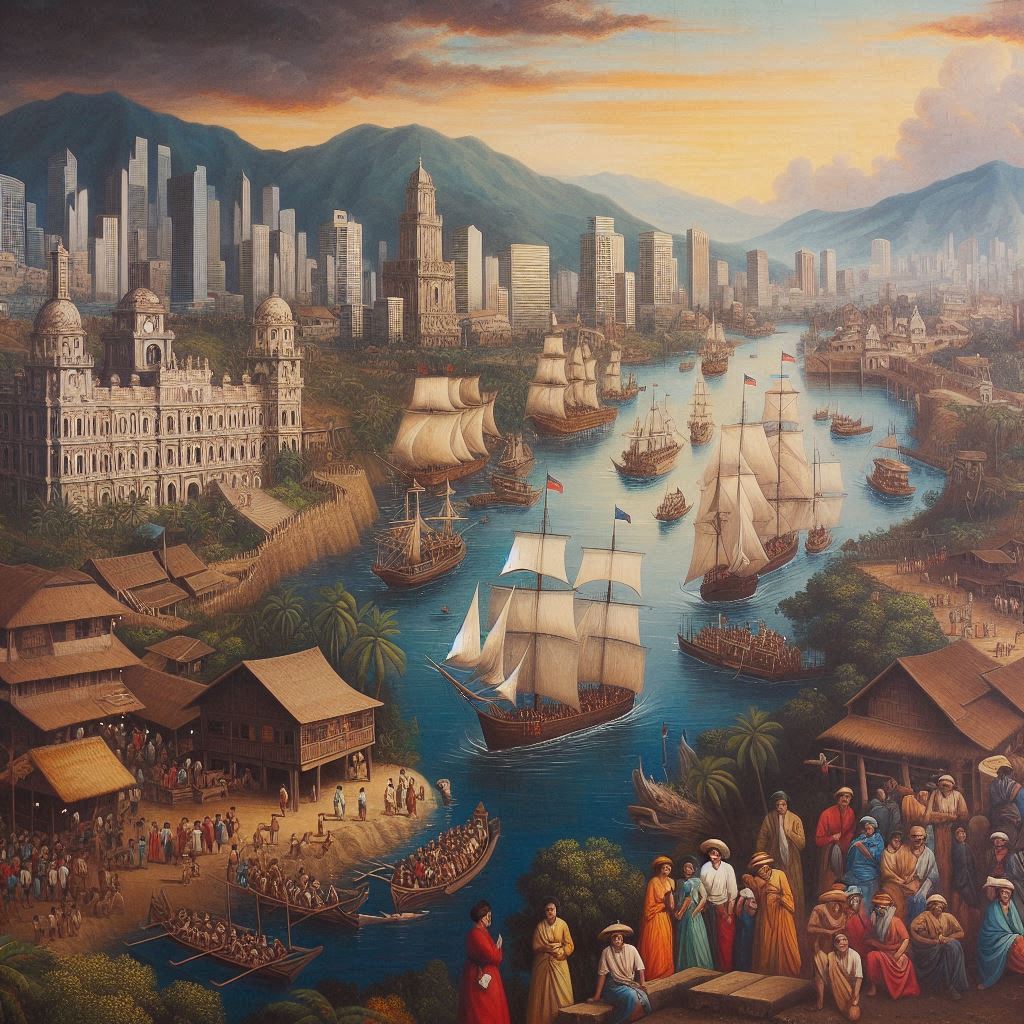The Rich History of Cebu: A Journey Through Time
Before the arrival of foreign powers, Cebu was a thriving center of trade and culture, inhabited by various indigenous groups who had established their own social structures and belief systems. The early inhabitants of Cebu were primarily Austronesian peoples, who engaged in agriculture, fishing, and trade with neighboring islands. They cultivated rice, root crops, and fruits, while their fishing techniques allowed them to exploit the rich marine resources surrounding the island.
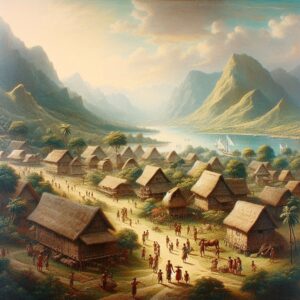
The social organization was characterized by a system of barangays, small communities led by chieftains known as “datus.” These barangays were often engaged in trade with other islands in the Visayas and beyond, exchanging goods such as textiles, pottery, and metalwork. The rich cultural tapestry of pre-colonial Cebu was woven from the threads of animism, ancestor worship, and the reverence for nature, which played a significant role in the daily lives of its people. The strategic location of Cebu made it an ideal hub for maritime trade long before European contact.
Its natural harbors facilitated the arrival of traders from various regions, including China, India, and the Malay Archipelago. These interactions not only enriched the local economy but also introduced new ideas, technologies, and cultural practices. The indigenous people of Cebu were adept at navigating the seas, using their knowledge of the stars and ocean currents to traverse vast distances.
This maritime prowess allowed them to establish trade networks that extended across Southeast Asia. As a result, Cebu became a melting pot of cultures, where local traditions blended with foreign influences. The pre-colonial era laid the foundation for Cebu’s future as a significant player in regional trade and cultural exchange, setting the stage for the transformative events that would follow with the arrival of European colonizers.
Key Takeaways
- Cebu has a rich pre-colonial history, with evidence of a thriving civilization before the arrival of the Spanish.
- The arrival of Ferdinand Magellan marked the beginning of Spanish colonization in Cebu, leading to significant changes in the region’s culture and society.
- The Battle of Mactan, led by Lapu-Lapu, resulted in the defeat of Magellan and is a significant event in Cebu’s history.
- Cebu’s strategic location made it a key trading hub during the Spanish colonial period, leading to its rise as a center of commerce in the region.
- The American occupation in the 20th century brought further changes to Cebu, shaping its modern development and infrastructure.
Spanish Colonization: The Arrival of Ferdinand Magellan

The Initial Encounter
The arrival of Ferdinand Magellan in 1521 marked a pivotal moment in Cebu’s history, as it ushered in an era of Spanish colonization that would profoundly alter the island’s social, political, and economic landscape. Magellan’s expedition was primarily motivated by the quest for a westward route to the Spice Islands, but upon reaching Cebu, he encountered a vibrant society that was already engaged in extensive trade. The initial interactions between Magellan and the local chieftains were marked by curiosity and mutual interest.
The Introduction of Christianity and Spanish Rule
Magellan sought to establish alliances with local leaders, particularly Rajah Humabon, who was intrigued by the foreigner’s knowledge and technology. This alliance led to the introduction of Christianity to Cebu, as Magellan baptized Humabon and several members of his court, marking the beginning of a significant religious transformation on the island. However, the Spanish colonization was not without its challenges.
Tensions and Resistance
While some local leaders embraced the new faith and sought to align themselves with the powerful Spanish empire, others remained resistant to foreign influence. The imposition of Spanish rule brought about significant changes in governance and social structure, often leading to tensions between indigenous customs and colonial authority. The introduction of new agricultural practices and trade regulations altered traditional ways of life, creating a complex dynamic between colonizers and the colonized.
Lasting Implications
As Magellan’s expedition continued its journey across the archipelago, it became clear that the encounter between Spain and Cebu would have lasting implications for both parties. The seeds of conflict were sown as local leaders grappled with their identities in the face of foreign domination, setting the stage for future resistance movements that would emerge in response to colonial rule.
The Battle of Mactan: Lapu-Lapu and the Defeat of Magellan
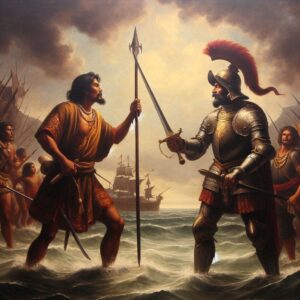
The Battle of Mactan on April 27, 1521, stands as a defining moment in Philippine history, symbolizing resistance against colonial oppression. Led by Lapu-Lapu, a local chieftain known for his fierce independence and leadership skills, this confrontation was not merely a clash of arms but a profound assertion of identity and sovereignty. Magellan had underestimated Lapu-Lapu’s resolve when he attempted to assert Spanish authority over Mactan Island.
Armed with superior weaponry and military tactics, Magellan believed he could easily subdue Lapu-Lapu and his warriors. However, Lapu-Lapu’s intimate knowledge of the terrain and his ability to rally his men proved decisive. The battle unfolded with ferocity as Lapu-Lapu’s forces engaged Magellan’s troops in close combat, ultimately leading to the death of the famed explorer.
The defeat of Magellan at Mactan reverberated throughout the archipelago and beyond, serving as a powerful symbol of resistance against colonial forces. Lapu-Lapu emerged as a national hero in Philippine history, embodying the spirit of defiance that would inspire future generations in their struggles against foreign domination. This event also highlighted the complexities of colonial encounters; while some local leaders sought alliances with the Spaniards for personal gain or protection against rival tribes, others like Lapu-Lapu chose to fight for their autonomy.
The battle marked a turning point in Cebu’s relationship with Spain, as it demonstrated that resistance was possible even against seemingly insurmountable odds. The legacy of Lapu-Lapu’s victory continues to resonate today, reminding Filipinos of their rich history of resilience and courage in the face of adversity.
Cebu as a Trading Hub: The Rise of Cebu as a Center of Commerce
| Year | Trade Volume (in millions) | Number of Trading Partners |
|---|---|---|
| 2010 | 500 | 50 |
| 2015 | 800 | 70 |
| 2020 | 1200 | 100 |
Following the initial encounters with Spanish colonizers, Cebu began to evolve into a prominent trading hub within the archipelago and beyond. The establishment of Spanish colonial rule brought about significant changes in trade dynamics as Cebu became a focal point for commerce between Asia and Europe. The Spanish galleon trade system facilitated the movement of goods across vast distances, connecting Manila with Acapulco and allowing Cebu to play a crucial role in this network.
Local merchants capitalized on this newfound status by engaging in both local and international trade, exporting products such as sugar, textiles, and ceramics while importing goods from China and other regions. This economic boom transformed Cebu into a bustling marketplace where diverse cultures converged, fostering an environment ripe for cultural exchange. As Cebu flourished as a center of commerce, its urban landscape began to change dramatically.
The influx of traders and settlers led to increased urbanization, with new infrastructure being developed to accommodate growing populations and commercial activities. Markets sprang up throughout the city, bustling with activity as merchants showcased their wares to eager buyers. The blending of cultures became evident in various aspects of daily life; culinary traditions evolved as local ingredients were combined with foreign influences, creating unique dishes that reflected Cebu’s diverse heritage.
Additionally, architectural styles began to merge as Spanish colonial structures coexisted alongside traditional Filipino designs. This period marked not only an economic transformation but also a cultural renaissance that would shape Cebu’s identity for generations to come.
American Occupation: Cebu in the 20th Century
The transition from Spanish to American rule in the late 19th century brought about significant changes for Cebu and its people. Following Spain’s defeat in the Spanish-American War in 1898, control over the Philippines was ceded to the United States. This new era introduced various reforms aimed at modernizing infrastructure and governance across the archipelago.
In Cebu, American authorities implemented educational reforms that emphasized English language instruction and introduced new curricula focused on science and technology. These changes had far-reaching implications for local society; education became more accessible to a broader segment of the population, fostering a sense of national identity among Filipinos while also creating opportunities for social mobility. However, American occupation was not without its challenges.
While some Cebuanos welcomed American governance as an opportunity for progress and development, others viewed it as another form of colonialism that threatened their cultural identity. Resistance movements emerged during this period as local leaders sought to assert their rights and autonomy against foreign control. The struggle for independence became intertwined with issues such as land reform and labor rights as Cebuanos navigated their place within this new political landscape.
Despite these tensions, Cebu continued to grow economically during American rule; investments in infrastructure led to improved transportation networks and communication systems that facilitated trade and commerce throughout the region.
World War II: Cebu’s Role in the Pacific Theater
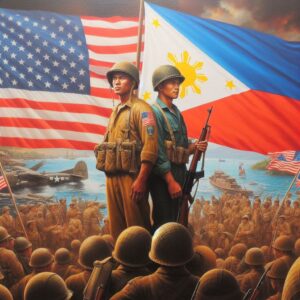
The Island’s Vital Role
The island served as a vital logistical base for both Japanese forces and American guerrilla fighters who operated clandestinely against their occupiers.
Hardships and Resilience
As battles raged across various fronts throughout the Philippines, Cebuanos faced immense hardships; food shortages became common as resources were diverted towards military efforts while civilian life was disrupted by violence and uncertainty. Despite these challenges, Cebuanos displayed remarkable resilience during this tumultuous period. Many locals joined resistance movements or provided support to Allied forces through intelligence gathering or logistical assistance.
Unity and Liberation
The spirit of unity among Cebuanos during World War II fostered a sense of camaraderie that transcended ethnic divisions; people from different backgrounds came together to fight for their shared freedom against foreign oppression. As liberation approached in 1945, Cebu witnessed fierce battles between Japanese troops and American forces determined to reclaim control over the island. The eventual victory marked not only an end to occupation but also signified a turning point in Philippine history as Cebuanos emerged from war with renewed determination to shape their own destiny.
Modern Cebu: The City’s Growth and Development
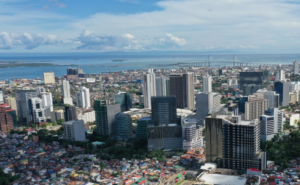
In recent decades, Cebu has undergone remarkable transformation into one of Southeast Asia’s most dynamic urban centers. Following independence from American rule in 1946, Cebu experienced rapid economic growth fueled by industrialization and globalization. The establishment of various economic zones attracted both local and foreign investments across diverse sectors such as manufacturing, information technology, tourism, and real estate development.
This influx of capital has led to significant improvements in infrastructure; modern highways connect different parts of the island while new commercial centers have sprung up throughout urban areas catering to an increasingly affluent population. Cebu’s growth has not only been economic but also cultural; it has emerged as a vibrant hub for arts and culture within the Philippines. Festivals such as Sinulog celebrate both religious devotion and cultural heritage while attracting thousands of visitors each year who come to experience its rich traditions firsthand.
Additionally, educational institutions have flourished alongside economic development; universities now offer programs that equip students with skills relevant to an ever-evolving job market. As Cebu continues to evolve into a modern metropolis while preserving its historical roots, it stands as a testament to resilience—a city that has navigated through centuries of change yet remains deeply connected to its rich heritage and vibrant community spirit.

